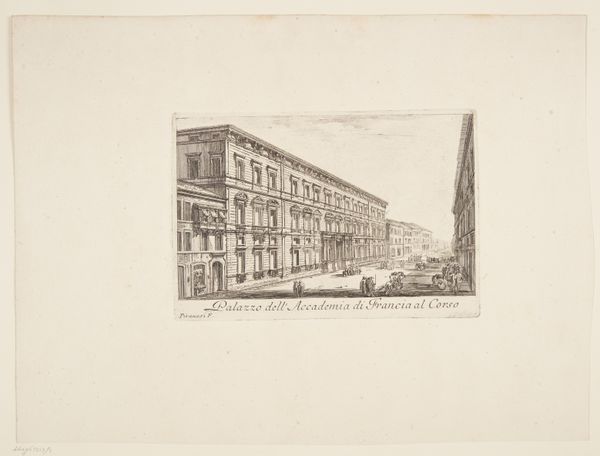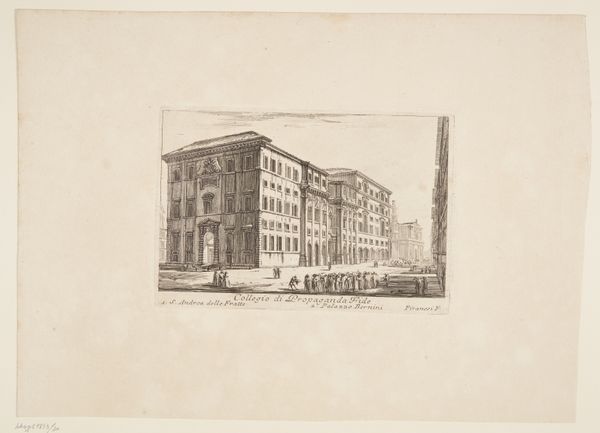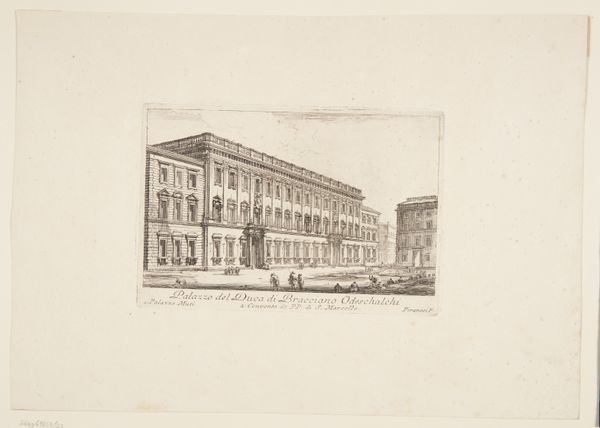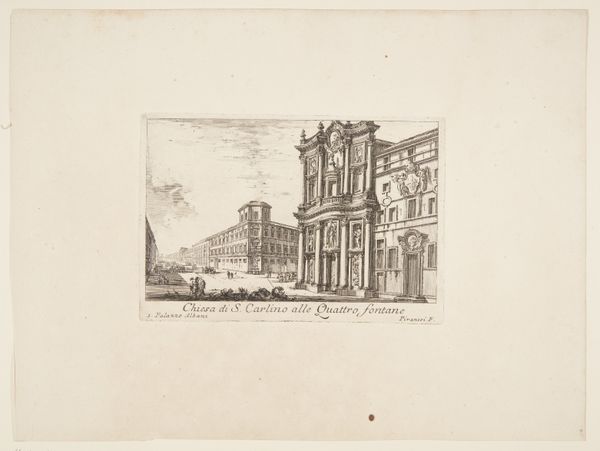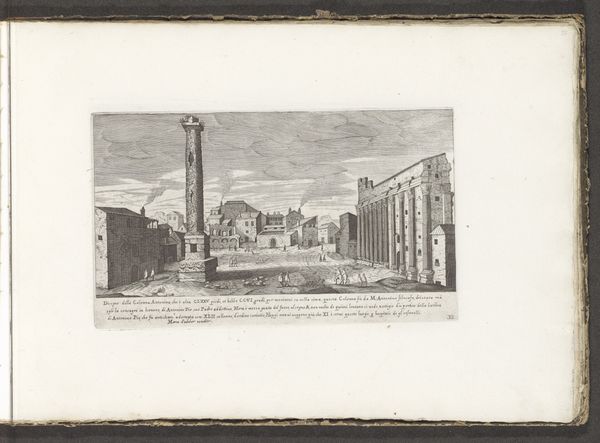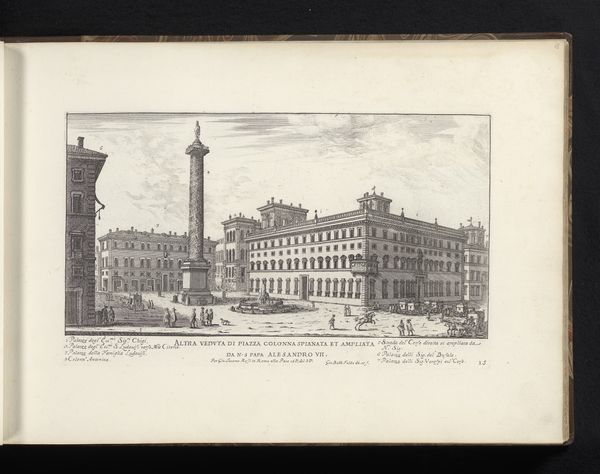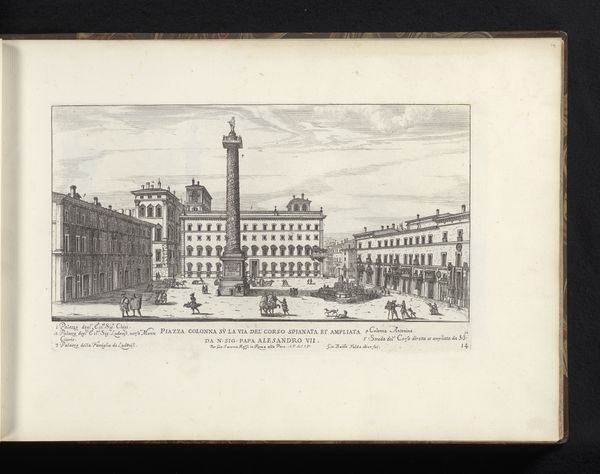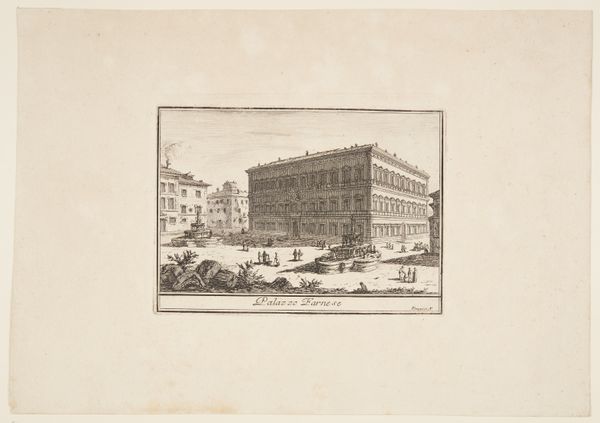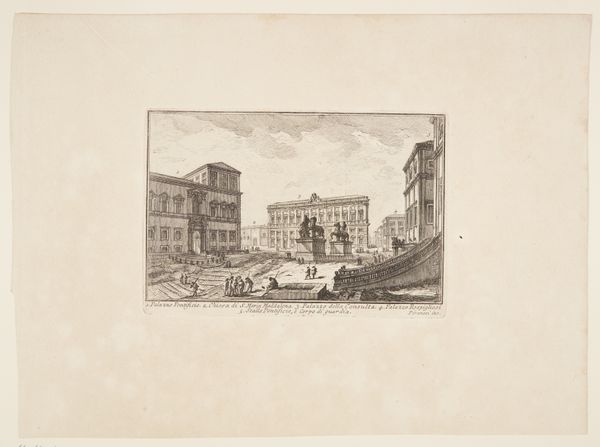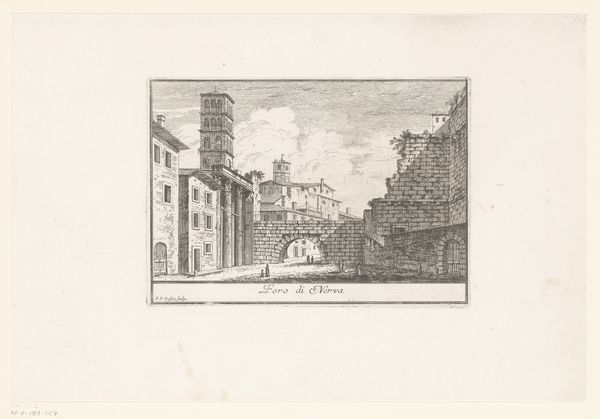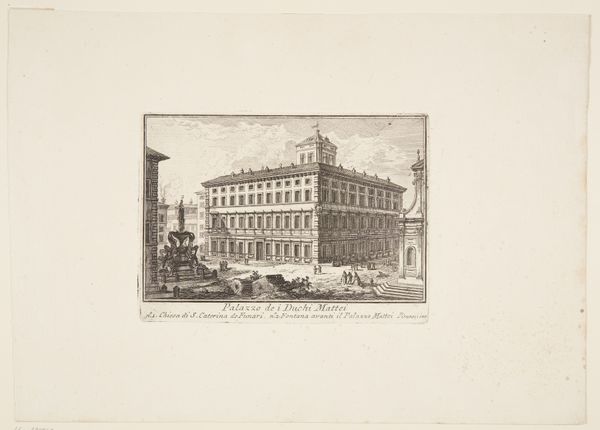
Colonna di M. Aurelio. 1. Palazzo Niccolini. 2. Palazzo del Vicegerente. 3. Monte Citorio. 4. Palazzo Chigi 1750
0:00
0:00
print, etching, engraving
#
baroque
# print
#
etching
#
etching
#
cityscape
#
history-painting
#
engraving
Dimensions: 132 mm (height) x 181 mm (width) (plademaal)
Curator: Paolo Anesi’s “Colonna di M. Aurelio. 1. Palazzo Niccolini. 2. Palazzo del Vicegerente. 3. Monte Citorio. 4. Palazzo Chigi,” created around 1750, presents us with an intriguing cityscape through the mediums of etching and engraving. Editor: The etching creates this surprisingly placid mood. It's so calm despite depicting a bustling cityscape! There is something quite balanced in the use of space. Curator: That tranquility belies a careful construction of power, doesn't it? Consider how Anesi situates the Column of Marcus Aurelius – a symbol of imperial Roman authority – amidst the modern palaces of the era. He is highlighting not just the architectural landscape, but also the enduring legacies of power that have shaped the urban fabric of Rome. We might read the Palazzo Chigi on the right in relation to gendered and political agency within this frame, too, situated as it is amongst seats of power and figures of historical and cultural importance. Editor: And look at the etching and engraving techniques! The detail achieved through these processes suggests meticulous labor, with sharp contrasts creating depth and texture and guiding our gaze throughout the whole city. The materiality itself speaks to a specific economy of production, consumption, and even the creation of knowledge. It gives this flat print a powerful sense of spatial organization. Curator: Exactly! By presenting this historical monument in relation to these modern buildings, Anesi effectively places the political struggles of the past in dialogue with the social dynamics of his time. One wonders what Anesi would make of the continued architectural changes within Rome centuries onward. Editor: I agree. Furthermore, prints such as this also facilitated the distribution of knowledge of these important Roman monuments, feeding an increasingly larger market as cultural artifacts themselves! To ponder about the work's impact across time makes it feel even more lively in this moment. Curator: So true! Anesi's work prompts us to interrogate not only the depicted space, but the intersectional, complex historical forces at play within it. Editor: Definitely, by appreciating the means by which it was rendered, and the materials utilized, we have revealed so many more historical factors contributing to both the work's construction and interpretation.
Comments
No comments
Be the first to comment and join the conversation on the ultimate creative platform.
